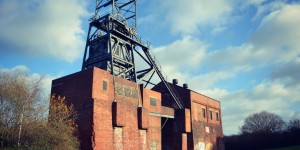The Dearne Valley contains a huge range of buildings and structures from all eras – from roman remains all the way through to modern industrial sheds for logistics. The quality and amount of the built heritage belies the perceptions that some have of the area as a post-industrial landscape. The scale of this built heritage is clearly shown in the heritage audit commissioned to support the development of the DVLP.
There are 14 conservation areas, 15 scheduled ancient monuments, over 249 listed buildings and over 50 landscapes classed as having special value, including one registered park/garden. Additionally, the South Yorkshire Sites & Monuments Record records over 600 sites, buildings and findspots of archaeological interest within the area. The gazetteer produced during the development of the DVLP shows 704 listed buildings, archaeological sites, historic structures, scheduled ancient monuments and listed landscapes.
Many of these buildings relate to the Dearne’s industrial heritage but it should be noted that whilst the coal industry was important to the Dearne and has had a major impact, it is not the only industry. There has been a tradition of other industries through the area, including significant glassworks, ironworks and brickworks as well as smaller manufacturing such as tinplate toys and mitre footballs, which went from the Dearne to around the world.
To give a sense of the wealth of built heritage it is worth highlighting some of the buildings. These select few though cannot do justice to the huge range and sheer quality of heritage within the Dearne.
Monk Bretton Priory – in the west of the Dearne on the edge of Barnsley town centre. A Cluniac priory founded 1153-55. There are extensive remains dating from the 12th to the 15th centuries. Of the main cloistral buildings, only the west and south ranges stand high, but the footings of the remainder of the buildings are exposed. Geophysical survey shows the potential for further structures on the site.
Hemingfield Colliery, Hoyland Nether – Sunk in 1842-47 for Earl Fitzwilliam. It has a stone engine house with a gabled roof and a flat-roofed stone building now a house. Small concrete headgears remain from recent use as pumping pit.
Conisbrough Castle – a medieval castle with a shell keep surrounded by an enclosure wall overlooking the narrow valley and the River Don. The castle fell into disuse in the fifteenth century and was already beyond repair by the reign of Henry VIII.
Church of St. John and St. Mary Magdalene, Lockwood Road, Goldthorpe – Built 1914-1916 by A.Y. Nutt. Reputed to be the first reinforced concrete church in the country. It is in a simplified Italianate style. An early experiment in ferro-concrete construction and the tower forms a notable landmark.
Grimethorpe Hall, Grimethorpe, Brierley – Built c.1670 for Robert Seaton. Altered in the 18th, 19th and 20th centuries. This English-bond red brick with ashlar sandstone dressings, rear elevation has herringbone-punched coursed, squared sandstone.
Elsecar Colliery Newcomen-type engine – A Newcomen-type atmospheric beam engine used to pump water from Elsecar Colliery. This is the only engine of its type anywhere in the world still in situ. It was built in 1795 and was last used in the 1930s.
Hickleton Hall – A country house, now a Sue Ryder Home. Built in 1745-48 by James Paine for Godfrey Wentworth. Enlarged c.1775 and altered 1857-60.
Glassby Arch – A stone arch sited in the garden of Fern Villa, Church Street, Mexborough. It was constructed c.1859 by Robert Glassby, stone mason and later sculptor. Considered to be of national significance.
Hoyland Lowe Stand Folly, Barnsley, Off the north-west side of Hawshaw Lane – A tower, built c.1750 for the 1st Marquis of Rockingham. It has been suggested the tower was used as a look-out for hunting.
Locations in the Dearne
All locations that are related to this content are as follows:









